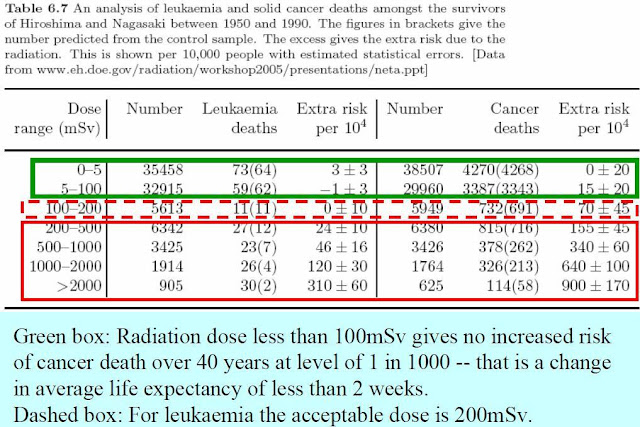This is an updated radiation chart courtesy of reader Goatguy
Note: the cancer risk probably starts after 100 milliSieverts.
Understanding how civil nuclear technology is the safe green solution by Oxford Physics
If a over 40 years of less than 1 or 2 in 1000 is tolerable (2-4 weeks average life expectancy, a hundred times smaller than that due to smoking), then
•in the case of leukaemia a radiation dose of 200 mSv is harmless
•in the case of solid cancers a dose of 100 mSv is harmless
•studies of other abnormalities show no significant effects at these low doses (not discussed here).
If you liked this article, please give it a quick review on ycombinator or StumbleUpon. Thanks

Brian Wang is a Futurist Thought Leader and a popular Science blogger with 1 million readers per month. His blog Nextbigfuture.com is ranked #1 Science News Blog. It covers many disruptive technology and trends including Space, Robotics, Artificial Intelligence, Medicine, Anti-aging Biotechnology, and Nanotechnology.
Known for identifying cutting edge technologies, he is currently a Co-Founder of a startup and fundraiser for high potential early-stage companies. He is the Head of Research for Allocations for deep technology investments and an Angel Investor at Space Angels.
A frequent speaker at corporations, he has been a TEDx speaker, a Singularity University speaker and guest at numerous interviews for radio and podcasts. He is open to public speaking and advising engagements.



